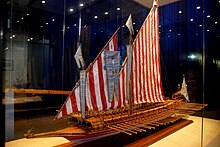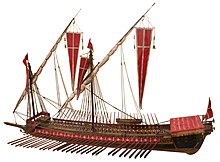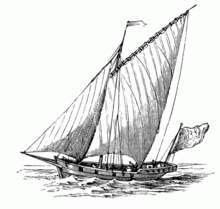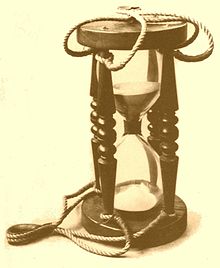
The lands of what today is known as Catalonia, in Spain, were first settled during the Middle Palaeolithic era. Like the rest of the Mediterranean side of the Iberian Peninsula, the area was occupied by the Iberians and several Greek colonies were established on the coast before the Roman conquest. It was the first area of Hispania conquered by the Romans. It then came under Visigothic rule after the collapse of the western part of the Roman Empire. In 718, the area was occupied by the Umayyad Caliphate and became a part of Muslim ruled al-Andalus. The Frankish Empire conquered the area from the Muslims, ending with the conquest of Barcelona in 801, as part of the creation of a larger buffer zone of Christian counties against Islamic rule historiographically known as the Marca Hispanica. In the 10th century the County of Barcelona became progressively independent from Frankish rule.

The Principality of Catalonia was a medieval and early modern state in the northeastern Iberian Peninsula. During most of its history it was in dynastic union with the Kingdom of Aragon, constituting together the Crown of Aragon. Between the 13th and the 18th centuries, it was bordered by the Kingdom of Aragon to the west, the Kingdom of Valencia to the south, the Kingdom of France and the feudal lordship of Andorra to the north and by the Mediterranean Sea to the east. The term Principality of Catalonia was official until the 1830s, when the Spanish government implemented the centralized provincial division, but remained in popular and informal contexts. Today, the term Principat (Principality) is used primarily to refer to the autonomous community of Catalonia in Spain, as distinct from the other Catalan Countries, and usually including the historical region of Roussillon in Southern France.

Francesc Eiximenis was a Franciscan Catalan writer who lived in the 14th-century Crown of Aragon. He was possibly one of the more successful medieval Catalan writers since his works were widely read, copied, published and translated. Therefore, it can be said that both in the literary and in the political sphere he had a lot of influence. Among his readers were numbered important people of his time, such as the kings of the Crown of Aragon Peter IV, John I and Martin I, the queen Maria de Luna, and the Pope of Avignon Benedict XIII.

The military history of Catalonia began in the thirteenth century, with the first exploits of the armies under the orders of Catalan rulers and lasting until today, where Catalan soldiers are integrated into international forces.

The Naval battle of Barcelona was a naval engagement of the Franco-Habsburg War fought off Barcelona from 29 June to 3 July 1642 between a Spanish fleet commanded by Juan Alonso Idiáquez, Duke of Ciudad Real, and a French fleet under Jean Armand de Maillé-Brézé, Duc de Fronsac.
In a three-day battle, Brézé defeated the Spanish fleet, which was attempting to relieve some Spanish garrisons isolated along the Catalan coast, and forced the Duke of Ciudad Real to retreat to Majorca for repairs. As usual in most of the battles involving Maillé-Brézé, the French fleet made an extensive use of her fireships. This time, however, a large French vice-flagship, the Galion de Guise, fell victim to one of his own fireships and went down enveloped in flames. The victory, in any case, was for the French fleet, and its main long-term effect was the fall of Perpignan into the hands of the Franco-Catalan army.

A marine sandglass is a timepiece of simple design that is a relative of the common hourglass, a marine (nautical) instrument known since the 14th century. Sandglasses were used to measure the time at sea or on a given navigational course, in repeated measures of small time increments. Used together with the chip log, smaller marine sandglasses were also used to measure the boat speed through the water in knots.
The Battle of Barcelona was a naval engagement fought in the coastal region of Barcelona, Catalonia, Spain, between the navies of the Crowns of Aragon and Castile, during the War of the Two Peters. A number of months beforehand, a large Castilian fleet had been assembled at Seville by order of the King of Castile, Peter I. Consisting of 128 warships including royal vessels, ships from the King of Castile's vassals, and several others that had been sent by the Castilian-allied monarchs of Portugal and Granada, this large fleet had been entrusted to the Genoese admiral, Egidio Boccanegra, who was seconded by two of his relatives, Ambrogio and Bartolome.
Albert Guillem Hauf i Valls is a Majorcan philologist, literature historian and literary critic. He is a specialist in Catalan and Occitan medieval literature.

The Catalan-Aragonese conquest of Sardinia took place between 1323 and 1326. The island of Sardinia was at the time subject to the influence of the Republic of Pisa, the Pisan della Gherardesca family, Genoa and of the Genoese families of Doria and the Malaspina; the only native political entity survived was the Judicate of Arborea, allied with the Crown of Aragon. The financial difficulties due to the wars in Sicily, the conflict with the Crown of Castile in the land of Murcia and Alicante (1296-1304) and the failed attempt to conquer Almeria (1309) explain the delay of James II of Aragon in bringing the conquest of Sardinia, enfeoffed to him by Pope Boniface VIII in 1297.

The History of the Catalan Navy is a book written by Arcadi García Sanz that glosses the Catalan Navy, in trade and war, its exploits and conquests, in a historical compilation that covers from Prehistory to this day. It describes the maritime battles, the Catalan sea consulates, to end by detailing aspects of maritime law, being the author a lawyer.
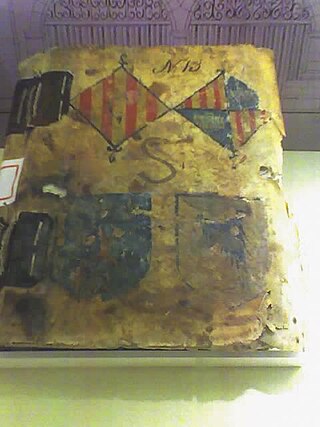
The Book of the Consulate of the Sea is a compendium of maritime law that governed trade in the Mediterranean for centuries. Of Catalan origin, it was translated into many languages and served as the basis for current international maritime law.

The Llibre de les Dones is a book that was possibly written between 1387 and 1392 by Francesc Eiximenis in Catalan in Valencia and dedicated to Sanxa Ximenes d'Arenós, countess of Prades.

The Vida de Jesucrist is a literary work by Francesc Eiximenis in Catalan written in Valencia possibly between 1399 and 1406, though the important scholar Albert Hauf dates it to 23 June 1403. It was dedicated to Pere d'Artés, who was a kind of Chancellor of the Exchequer of the Crown of Aragon, whom Eiximenis had already dedicated the Llibre dels àngels.

The Pastorale (Pastoral) is a literary work that was written by Francesc Eiximenis in Valencia in Latin between 1397 and 1400. It was dedicated to the bishop of Valencia Hug de Llupià.
Martí de Barcelona was a Catalan Capuchin historian.

Scala Dei, also called Tractat de contemplació, is a literary work written by Francesc Eiximenis possibly in 1399 in Valencia in Catalan and dedicated to Maria de Luna, queen of the Crown of Aragon and wife of king Martin of Aragon.
The Tractat d'Usura is a literary work written by Francesc Eiximenis in Catalan around 1374 possibly in Catalonia.

The Army of the Principality of Catalonia was the army raised by the Junta de Braços of Catalonia on 9 July 1713 after the Peace of Utrecht and the withdrawal of the army of the Holy Roman Empire by the L'Hospitalet Agreement. The army was made up of 10,000 infantry, 1,600 cavalry and 1,000 naval troops. It is not known how many men formed the artillery unit but it did not exceed 700. In total, the army contained 13,000 regular troops.

The Capture of the galleon Lion Couronné was a naval engagement that took place off Formentera on 17 June 1651, during the Franco-Spanish War (1635–1659). A squadron of eleven Spanish galleys under John of Austria the Younger captured the French galleon Lion Couronné after a fight.

The First War of Sicily was a protracted conflict for control of the Kingdom of Sicily and naval dominance in the Mediterranean, spanning from 1282 to 1302. This article focuses on the initial phase of the war (1282–1294), fought between the Crown of Aragon and the House of Anjou, which held power in Naples and France. For the main article on the conflict, see War of the Sicilian Vespers.



